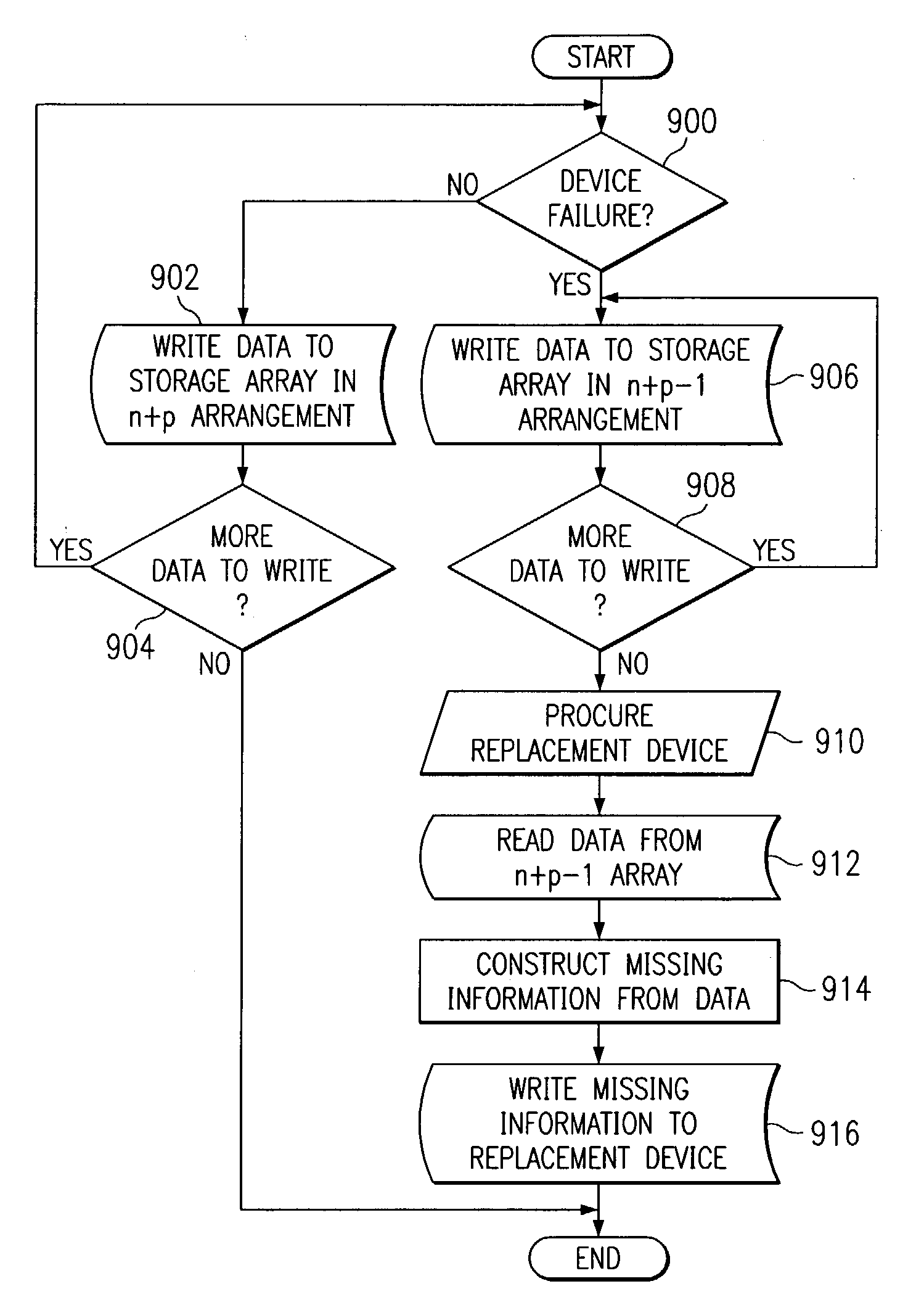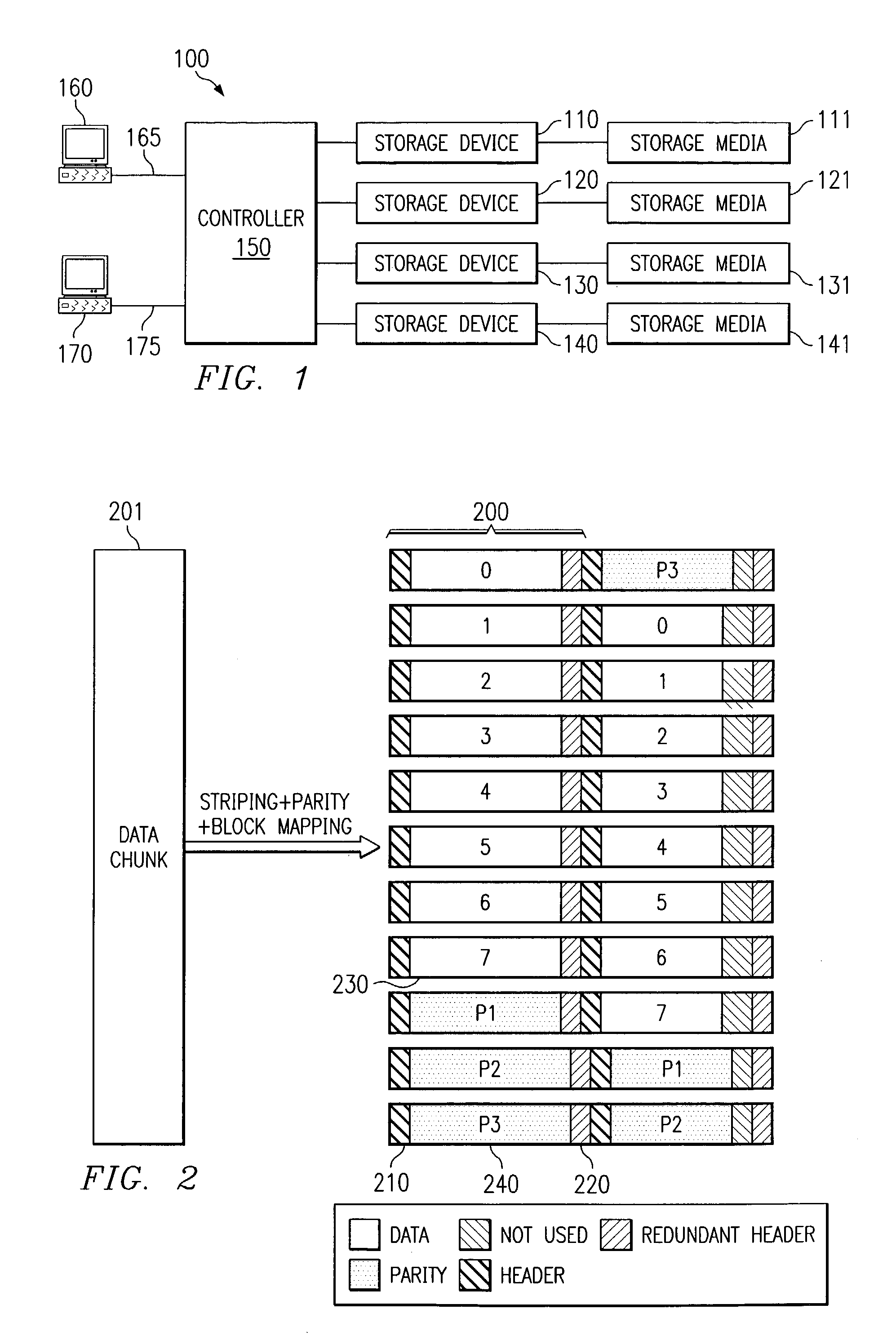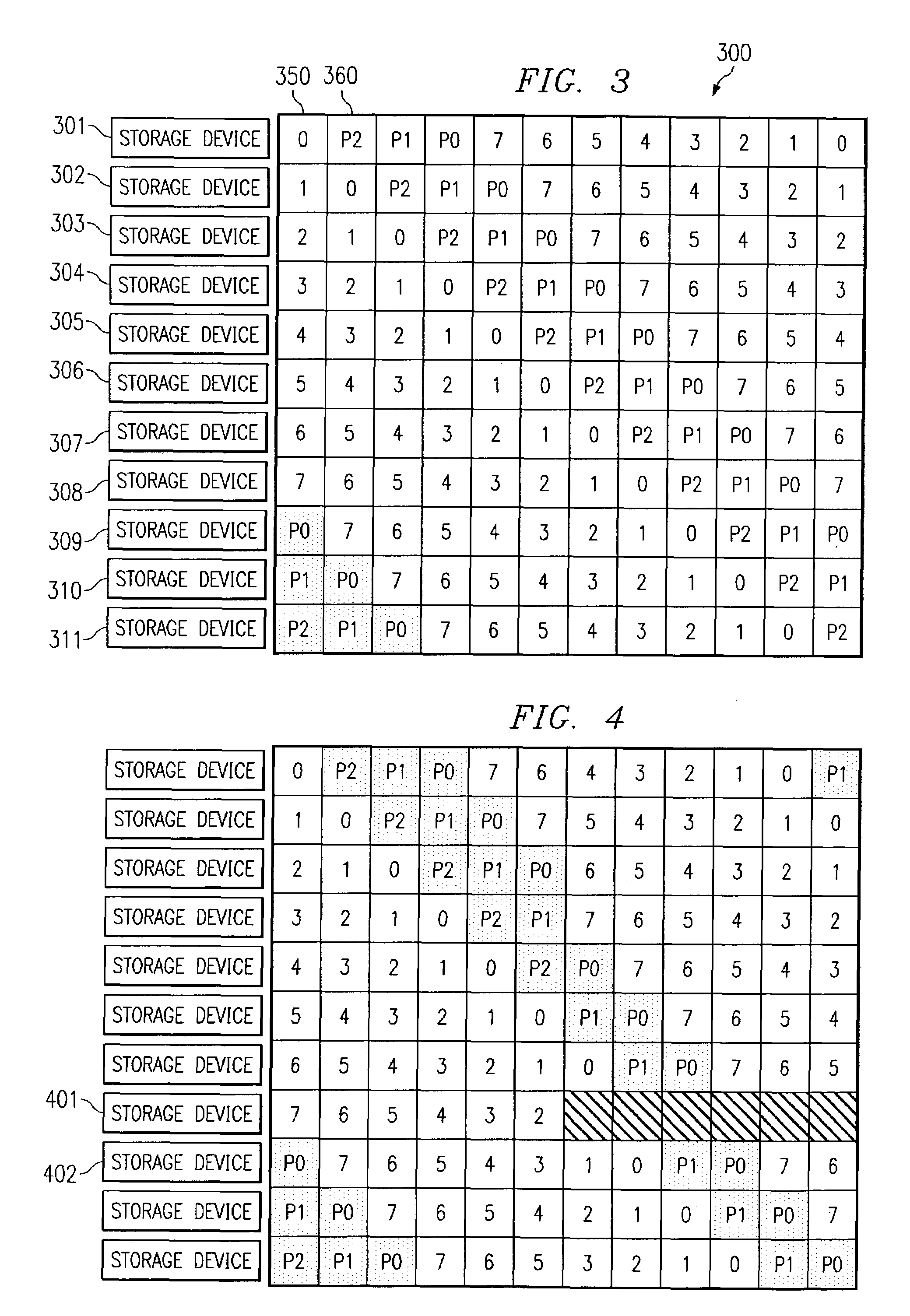Simultaneous writing and reconstruction of a redundant array of independent limited performance storage devices
- Summary
- Abstract
- Description
- Claims
- Application Information
AI Technical Summary
Benefits of technology
Problems solved by technology
Method used
Image
Examples
Embodiment Construction
[0026]FIG. 1 is an exemplary block diagram of a simple redundant array of storage devices 100, which may be, for example, a Redundant Array of Independent Tapes (RAIT). As shown in FIG. 1, array 100 includes a plurality of redundant storage devices 110-140, a controller 150, and a plurality of user devices 160 and 170.
[0027]Controller 150 controls the reading and writing of data across redundant storage devices 110, 120, 130, and 140. Storage devices 110, 120, 130, and 140 read from and write to storage media 111, 121, 131, and 141, which may be fixed or removable media. Controller 150 performs the functions described herein with regard to determining superblock headers, sending superblock header information, data and parity information to redundant storage devices 110, 120, 130, and 140 to be written to the storage media, modifying superblock headers, and the like. These operations are described in more detail at a later point in this document.
[0028]User devices 160 and 170 may be ...
PUM
 Login to view more
Login to view more Abstract
Description
Claims
Application Information
 Login to view more
Login to view more - R&D Engineer
- R&D Manager
- IP Professional
- Industry Leading Data Capabilities
- Powerful AI technology
- Patent DNA Extraction
Browse by: Latest US Patents, China's latest patents, Technical Efficacy Thesaurus, Application Domain, Technology Topic.
© 2024 PatSnap. All rights reserved.Legal|Privacy policy|Modern Slavery Act Transparency Statement|Sitemap



